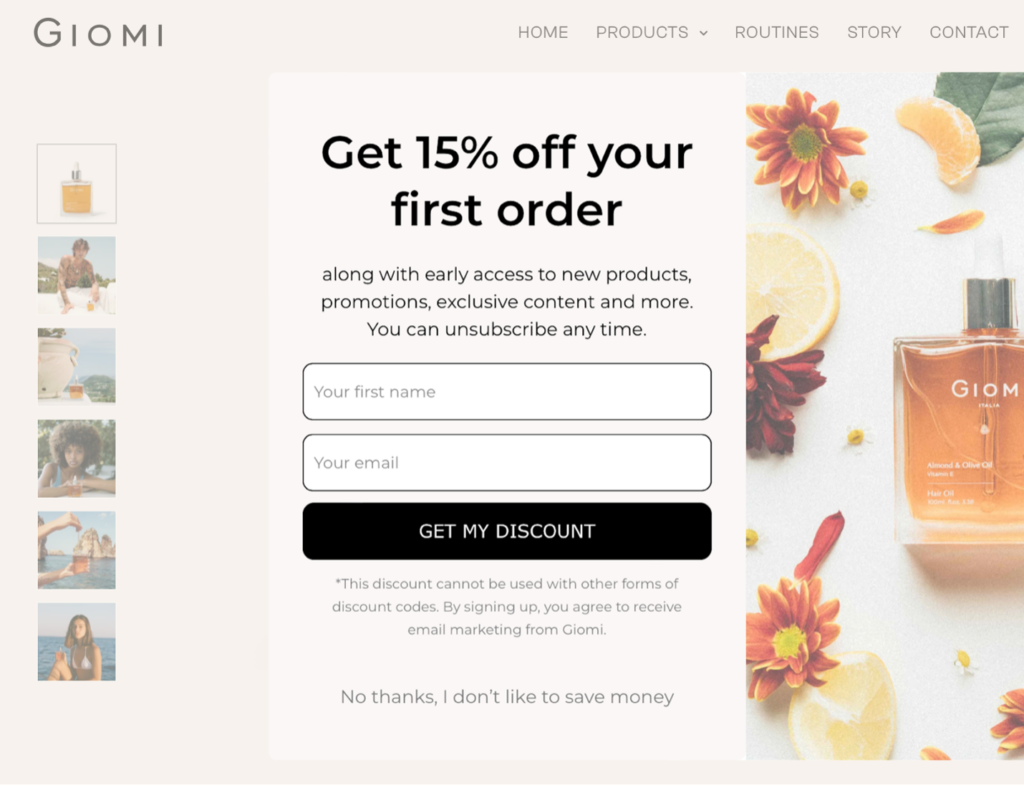
This week we observe a new trend regarding cookies and opt-in preferences. In some USA cosmetic websites (but probably also elsewhere) we found some unconventional options. In websites like the one shown in the picture, instead of giving the traditional options “accept” or “reject/decline/cancel”, the authors present the consumer with the following options:
A: Insert email and/or name and/or phone number to unlock the discount
B: “No, thanks I prefer to pay more”; or “No thanks, I don’t like to save money” (picture above); or some similarly ironic claims.
Although at first impression the second option may sound funny and almost friendly, at a closer reading we realize that it conceals some non-bona fide true information.
First of all, the website semiotic format of the two-options-choices helps them presuppose (i.e., give for granted) that the only two available options are the ones presented and nothing else (what is technically called a presupposition by alternative). Indeed, if someone tells us about some destination under discussion: “you can either reach us by plane or by train”, we understand that in that context it is only possible and reasonable to consider those two options. But sometimes, like in the case under discussion, this may not correspond to reality (because there are in fact more options), and this formulation may be used for persuasive or manipulative purposes. Here, indeed, the real choice is rather between giving the brand all that personal information or…not giving it! Yet, the website designers framed the question in a way that suggests that your decision is only about saving money or not. By doing so, they significantly downplay the aspect of personal data collection, which is the most important for the source, and which is yet not favorable for the persuasive attempt.
Furthermore, through the use of a friendly ironic sentence, they imply (i.e. they communicate without saying it) that the second option is somehow ridiculous, and thus not the best one.
Overall, through these two implicit strategies, the marketers try to convey the idea that the user can only benefit from giving out their data, and that not doing so represents an unreasonable choice, similar to not wanting to save money. If stated explicitly, this would have presumably convinced nobody, whereas in this cool and implicit format… it does the job!